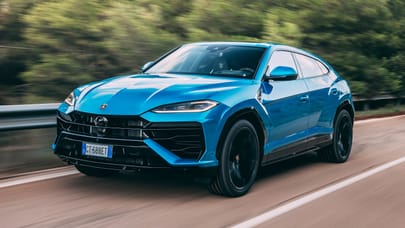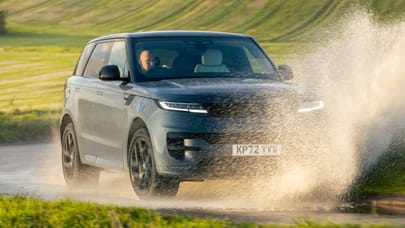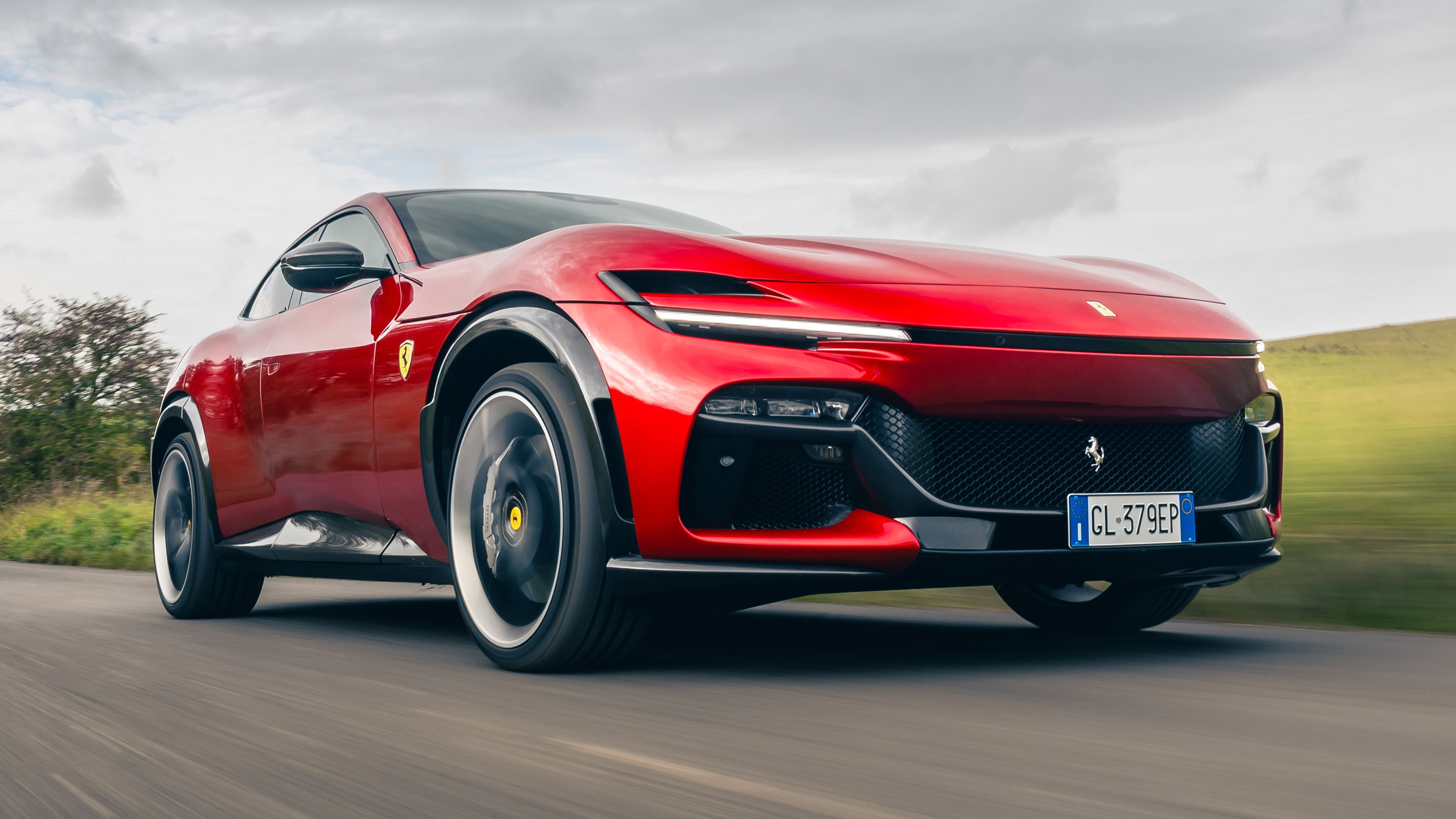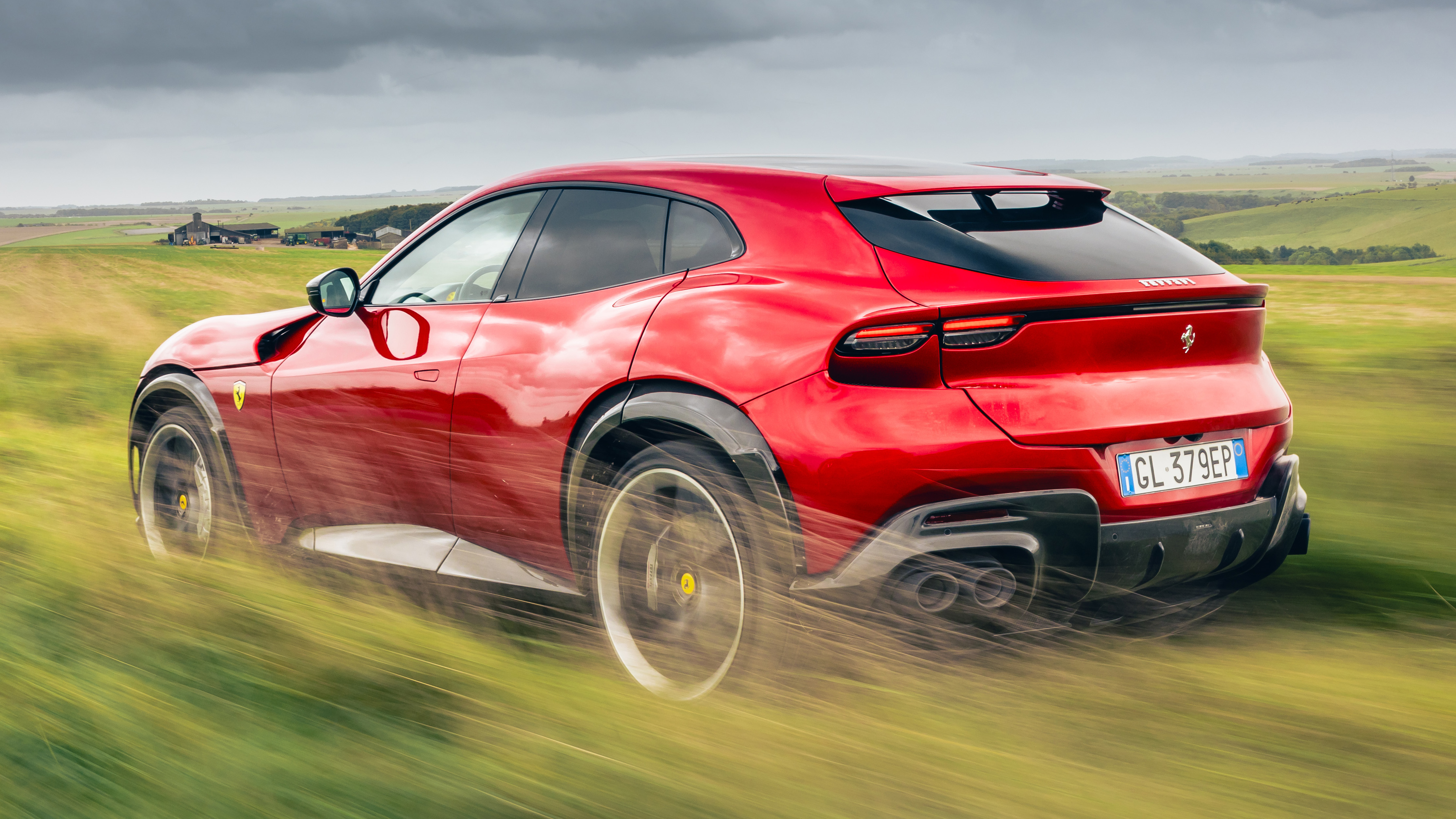
Ferrari Purosangue review
Good stuff
Fast, noisy, genuinely impressive on-road dynamics, feels like a Ferrari
Bad stuff
Four-seat only, wince-inducing fuel economy, limited ground clearance and off-road ability, not cheap
Overview
What is it?
Purosangue; it translates directly as ‘pure blood’ but once you’ve finessed the Italian translation a little bit, resolves more like ‘thoroughbred’. Apt for a brand whose identity is forever recognised as a famously flouncy horse, and something of a departure for the maker of supercars. Mainly because Ferrari’s first attempt at a more practical, higher-riding vehicle has produced a four-door, four-seat, four-wheel drive SUV with a 6.5-litre V12 stuffed under the bonnet.
Except Ferrari doesn’t think the Purosangue should really be considered an SUV. It claims it defines a new genre, and is a thing all on its own. Cue much debate: if it looks like a duck and quacks like a duck…
But much as it pains us to say it, Ferrari may have a point.
How so?
Well, with the proliferation of hyper-SUVs such as the Lamborghini Urus and Aston Martin DBX 707, there’s a conversation to be had about what ‘sports’ actually means – because most of them simply batter physics around the head with electronics and power. Fun hammers, yes. Scalpels they are not.
The Purosangue bucks trends. You could argue that in following the SUV acronym to the letter, it’s the purest, most genuine SUV there is. It really is properly sporting. It’s four-seat only, with the rear accommodation (accessed via rear-hinged doors) as plush as the front. The 715bhp, 6.5-litre V12 – a cylinder layout unique since the Lamborghini LM002 went out of production and the Q7 V12 TDI died – has various bits commandeered from the Ferrari parts bin (and that’s a parts bin worth plundering) and is stuffed so far up under the bulkhead, the last two cylinders should warm your knees.
It’s front-mid-engined, and it shows. The eight-speed, paddle-operated gearbox is at the back, with a power take-off unit (largely borrowed from the GTC4 Lusso) operating a pair of clutches to power each front wheel. Although that four-wheel drive feels very much a helper, rather than for mud-plugging. This is a car that is very rear-wheel drive in most circumstances.
That sounds very Ferrari. What else is new?
There’s a fresh take on an interior, new ways to interact with the systems (see the Interior section for a bit more detail on that), and a very clever suspension system that’s allows the Purosangue to both handle like a Ferrari should and provide the kind of GT comfort that an SUV buyer might actually want. Head to the Driving tab for that bit.
Before you go, it’s worth knowing there is no hybrid assistance whatsoever, so nothing to alleviate the considerable fuel consumption. The figures are some of the worst we’ve seen in a long time: 393g/km of CO2 and combined fuel economy of 16.3mpg.
But here are the other numbers you want: 0-62mph in 3.3 seconds and a top speed of 193mph. And one final one: £313,360. That’s the base price, and given Ferrari’s attitude to options, it means few Purosangues are going to emerge costing less than £400k.
This is purposeful. Ferrari is deliberately trying (and succeeding since the waiting list is claimed to be two years long), to position itself above any other rival. The only car than can compete on cost (and is that really a competition you want to win?), is the Rolls-Royce Cullinan.
How does it compare to rivals?
If you put cost to one side, the Purosangue dominates the Urus/DBX opposition. For starters, it doesn’t have to use existing components borrowed from other brands. The Urus obviously shares platforms, engines and more with Bentley, Audi and Porsche, while Aston borrows powertrain tech from Merc. Both – and in fact all rivals – have stuck to a traditional SUV layout that puts practicality and space first. The Purosangue doesn’t. It’s puts Ferrari-ness first and then works out what space it can carve out without losing the essential essence.
But boy is it a lot of money for a car that isn’t really any faster than a DBX 707 or Urus Performante. Though it does drive better than both. The purity of that V12, the uncanny ride quality, the accuracy and poise – it’s something the hyper SUV class hasn’t seen before.
Is it just lifted, or genuinely useful?
Useful, actually… to a point. When it comes to the real-life aspect of living with the Purosangue, there’s a hatchback and a 473-litre boot which, although not overly large, has the ability to expand by dropping the seats electrically. It’s not a totally flat loadspace and it’s not huge, but certainly enough for a few boxes. There will also be a series of accessories made of fabulously expensive carbon fibre, obviously, which will allow for bike and ski carriage. It’s as practical as it can be while still retaining a semblance of Ferrari-ness. In context, it feels like midway between a big GT and an SUV.
What's the verdict?
Ferrari seems slightly insecure about the Purosangue, probably because it originally said it wouldn’t play in this particular arena. It’s also a bit toppy, even for this rarefied atmosphere. £313k isn’t pocket change for a series production car no matter how profligate the oligarch.
But the company really shouldn’t feel awkward. Technology has moved on, the market has matured, and the Purosangue offers something that Ferrari buyers have thus far been unable to access: a genuine daily Ferrari with four usable, accessible seats.
The good bit is that the Purosangue leans heavily towards Ferrari’s core proposition with an added dose of daily useability, rather than a re-cloaked SUV. It’s impressive, and certainly the most convincing ‘SUV’. Ironically, it’s probably the only one that really deserves the name.
The Rivals

£208,000 - £215,308

Aston Martin DBX
£205,000 - £245,000 
Land Rover Range Rover Sport
£63,285 - £112,685 Trending this week
- Car Review
BMW iX3







